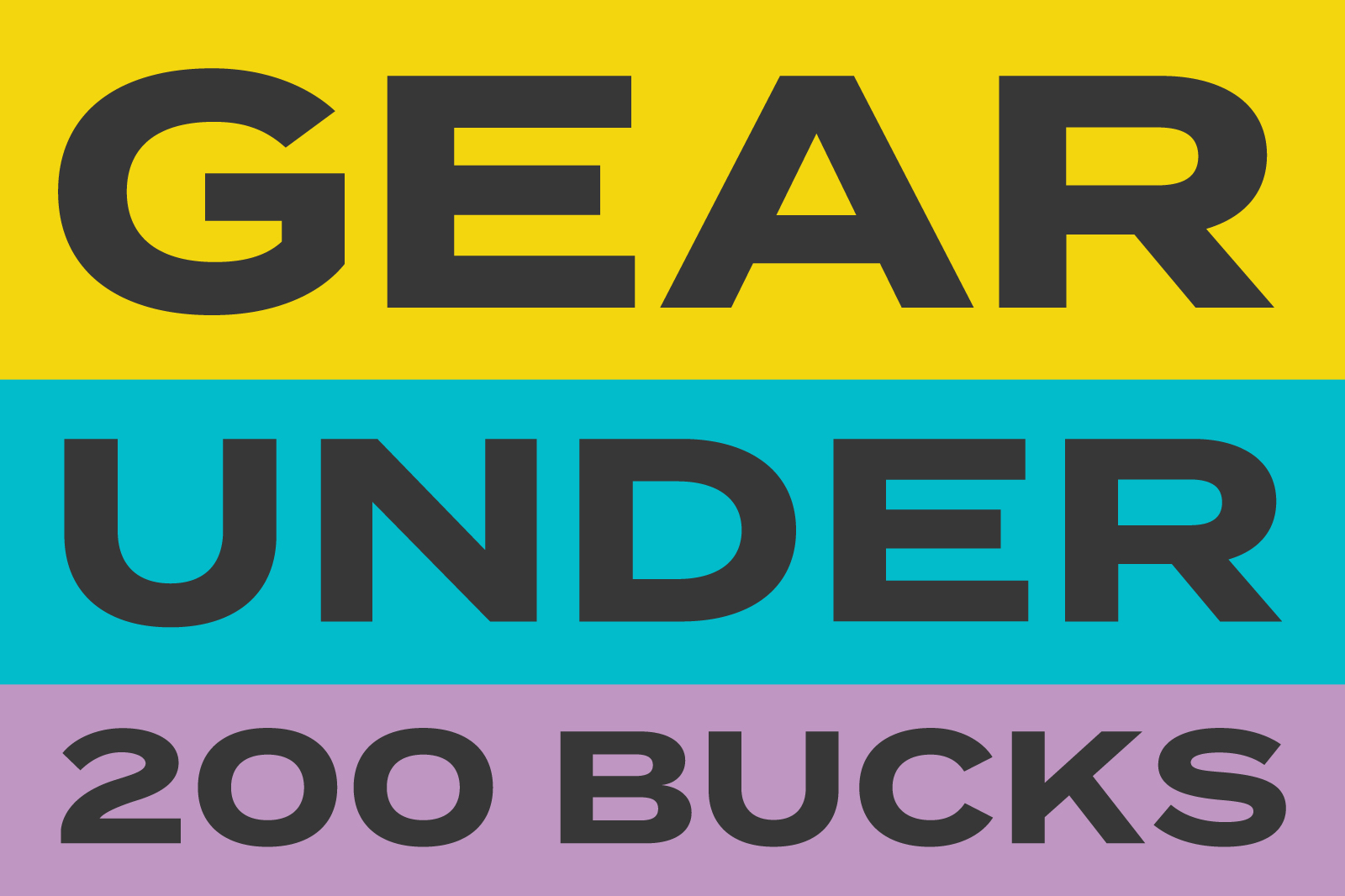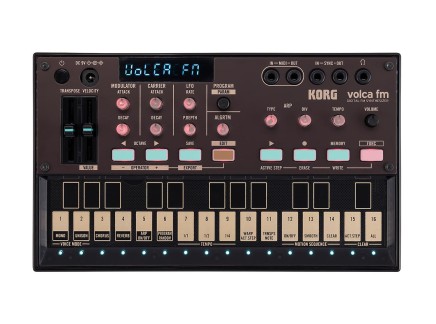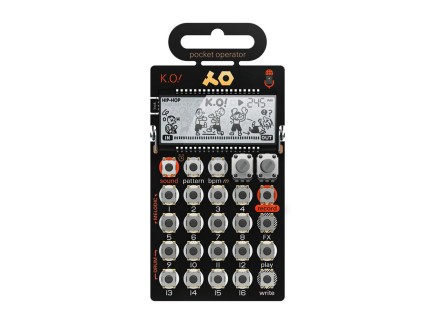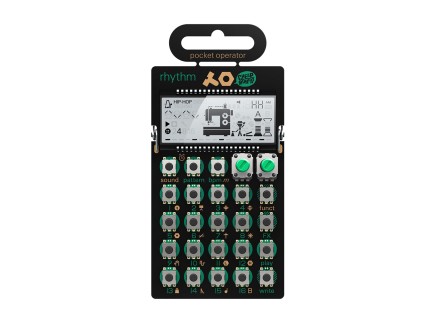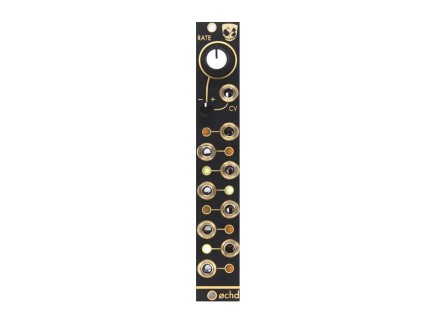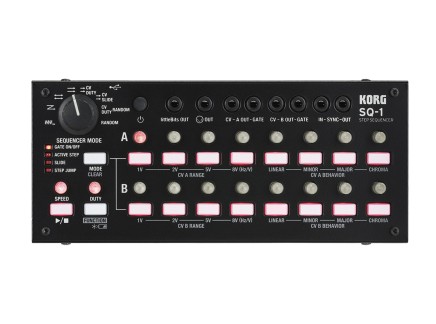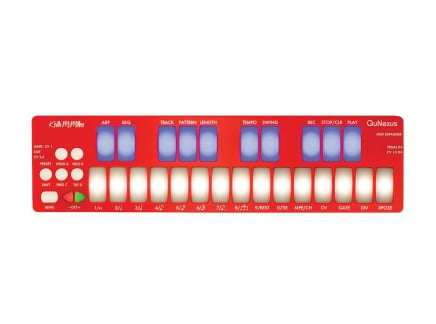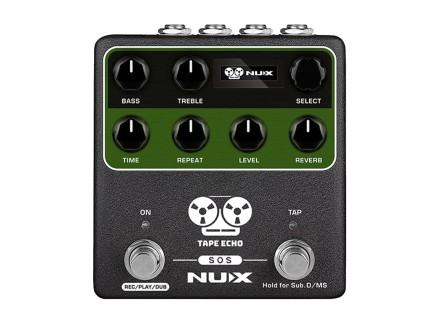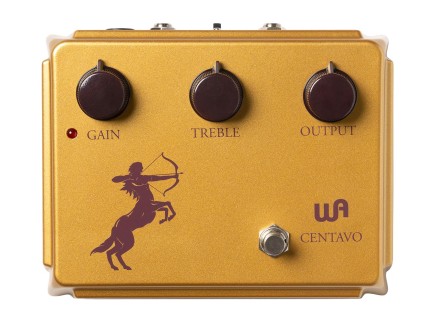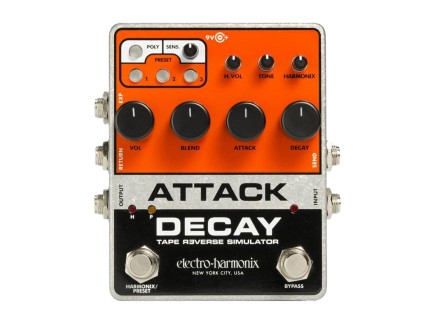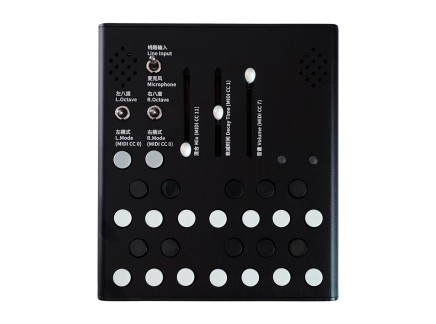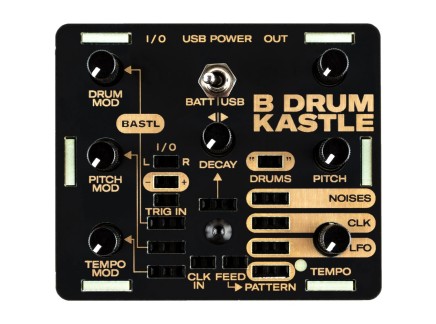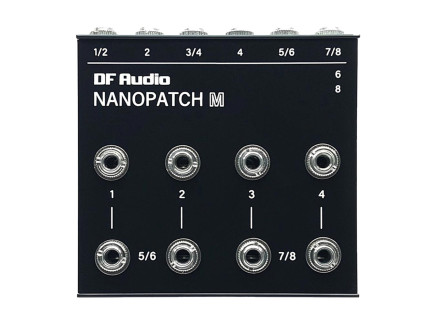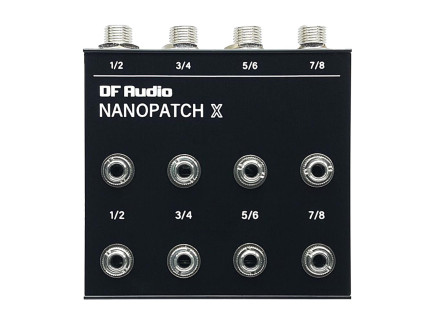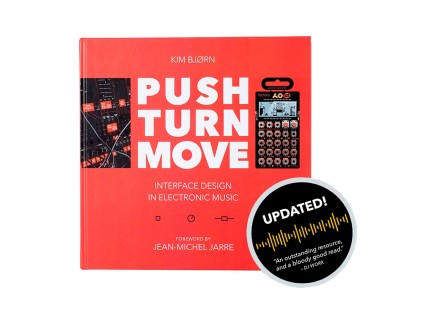We're writing to you from the end of an another amazing year in the world of music gear—another year in which so many amazing musicians have gotten started with electronic music, studio recording, and the weird world of synthesis. But one thing that stands out to us more clearly than ever is that getting into electronic music is easier and more affordable than it has ever been. Companies like Korg, Teenage Engineering, Bastl, Roland, SOMA Laboratory, Arturia, Tiptop Audio/Buchla, and plenty of others are making devices that have turned a field that previously had a high barrier to entry into something that's approachable by most musicians young and old. As such, we're taking a look back at 2022 and a look forward to 2023, celebrating some of our favorite gear for musicians under $200.
We're going to take a look at a number of different types of gear that might suit different types of musicians or producers. There's a lot to cover, so feel free to use these links to jump straight to the gear that's most relevant to you or the lucky kid/pal/significant other/neighbor you're shopping for. We'll take a look at:
- The all-around best budget-friendly desktop synthesizers and drum machines
- Stellar deals for Eurorack modular synth gear
- Awesome controllers for modular synths and computer-based music production
- The coolest effect pedals for guitar and synths
- Affordable standalone tools for experimental sound design
- An excellent budget recording studio tool
- And some fun/thoughtful/generally rad non-gear gift ideas
Whether you're looking for a gift for the electronic music lover in your life, or whether you're looking for something new to add to your own setup, we think this list is an awesome place to start...so without further delay, let's dive in.
Best Budget Desktop / Standalone Gear
Even as we venture into 2022, it's impossible to ignore the tremendous value offered by a few specific product series produced by some of the electronic musical instrument industry's biggest names. Designed to provide the best bang-for-your-buck possible, Korg's Volca series, Roland's Aira Compact series, and Teenage Engineering's Pocket Operators all provide multiple ways to get into the world of electronic music-making. With individual devices from each series focused on specific musical tasks (synthesis, sampling, beatmaking, etc.), these product lines offer something for everyone: and when you decide it's time to expand, each offers simple interconnectivity options that make it easy to play along with friends from their own product families as well as gear from other manufacturers. Let's look at some highlights from each of these product lines.
Korg Volca Series: Volca Drum + Volca Sample 2
We can't ignore the overall impact of Korg's Volca series of synthesizers and drum machines. Originally introduced in 2013, this line of compact instruments each sports a similar form factor and general design philosophy: each Volca is a battery-powered device focused on a specific style of synthesis or drum programming, with a dedicated internal sequencer and a touch plate keyboard. They can all be synced together, and most models feature a 5-pin DIN MIDI input, making it easy to tie them into even professional studio or performance rigs. While every model in the Volca lineup is a blast, I want to take a second here to highlight a couple of our favorites: the Volca Drum and Volca Sample 2.
Volca Drum is a percussion synthesizer/sequencer based on dual-layer physical modeling synthesis, meaning that it can create everything from highly realistic to otherworldly percussion sounds. Each program consists of six parts, each part acting as an independent drum channel/sound. What's particularly interesting about this, though, is that each part uses the same sort of sound engine as one another...so unlike traditional drum machines, where one channel might be dedicated to kick sounds, another for snares, etc., Volca Drum allows you to build your sound palette completely from scratch. Individual sounds can also be sent into a global "waveguide"—a delay effect optimized for use as a Karplus-Strong style "string"/resonator. This can provide a number of bizarre effects, from glitchy beat repeats to string-like resonances...and between all of these sound-making options and the powerful built-in sequencer, we have to say that Volca Drum is one of the most interesting and fun drum machines on the market and any price point.
Of course, if synthesis/physical modeling isn't your vibe, then there's also the Volca Sample 2—a new version of one of the coolest Volcas altogether. With a wealth of samples built in and the option to import user samples, Volca Sample is one of the most affordable and feature-rich sample-based grooveboxes currently available. You have access to sample looping, reversing, start/end point selection, and much more, allowing you to turn even familiar sounds into something entirely new. Offering eight simultaneous channels of sample sequencing complete with options for pattern chaining, Volca Sample is a sure way to build a foundation for any track, or just to have fun playing with sound.
Naturally, there's much more to the Volca line than just these two—the classic Volca Beats is a 808-style drum machine great for beatmaking, while the Volca Bass offers 303-style acid bass synth groovebox functionality. And of course, one of our favorites is the Volca Modular, which offers a taste of the out-there experimental textures of modular synthesis at an incredible price ($169.99 at the time of writing). Every Volca out there is an absolute blast, and if you want to have fun intuitively creating grooves and soundscapes, it's hard to go wrong with any of them—check out our full selection of Volcas for a sense of what's out there!
Want some more ideas? Check out our full in-stock inventory of synthesizers and drum machines under $200 for even more!
Teenage Engineering Pocket Operators
Hands down, Teenage Engineering's Pocket Operator series are some of the most bizarre affordable music-making tools out there—and they're as fun as it gets. Each ringing in at fewer than $100 at the time of writing, they're a great choice of gift for the electronic music nerd in your life...even if that nerd is you. Each sporting an intentionally calculator-esque appearance, these pocket-sized, bare-bones devices are some of the quirkiest and most interesting drum machines, synthesizers, and samplers currently available. Frankly, it's hard to go wrong with any of them—but we want to highlight one of our favorites, namely PO-33 K.O.
PO-33 K.O. was a late entry into the pocket operator lineup—adding many features absent from prior models. K.O. is a sampler of sorts, using a built-in microphone (or line input!) to add completely new capabilities to the Pocket Operator lineup. PO-33 K.O. is a sampler/sequencer with both melodic and drum modes and up to 40 seconds of internal sample memory. This enables everything from sequenced sample melodies to multi-sample percussive sequencing—allowing you to create full tracks made up of your own sounds. Capable of doing both melodic and drum sample sequencing simultaneously (with a modest 4-voice polyphony limit), you can use PO-33 K.O. to make entire tracks with ease.
Of course, there are plenty of other Pocket Operators out there as well, each with their own aesthetic angle. One of the coolest aspects of the Pocket Operator series, though, is that they can all play together so nicely. Each features an external input and external output, with several options for how to connect multiple devices. It's a breeze to sync your Pocket Operators to other devices like Korg Volcas, external sequencers or synths...and in fact, it's possible to chain together several Pocket Operators, and plug a headphone jack into the output on the last unit to hear them all mixed together (just pick up some MC-3 sync cables to make the connections and you're good to go!). Even years after their introduction, Teenage Engineering's Pocket Operators present one of the most compelling value propositions in the entire synth/drum machine industry, and we're sure that any electronic music lover would have a blast with them.
Need some more inspiration? Scope out our in-stock sub-$200 inventory of synthesizers and drum machines!
Roland Aira Compact Series
Not one to let Korg and Teenage Engineering and Korg have all the fun, this year Roland released their own line of portable, battery-powered, highly flexible music-making machines: the Aira Compact series. All ringing in just under $200 as of the time of this article, this series presents the opportunity to capture the sound of some of Roland & Boss's most famous tools at an unprecedented price. Each Aira Compact unit features MIDI Input and Output, the ability to stream MIDI and audio via USB to your computer, and ~4.5 hour battery life, great for getting you from gig to gig or for enjoying some classic synth sounds on the go.
First up is the Aira Compact J-6: a four-voice chord synthesizer based on the iconic Juno-60 analog synth from the 1980s. Using Roland's Analog Circuit Behavior (ACB) technology, the J-6 provides a stunningly accurate recreation of the cult-classic polysynth, with a price and form-factor oriented more toward budget-conscious musicians. The J-6 is designed to streamline the process of generating lush pads and harmony for your tracks, with an on-board sequencer for creating harmonic progressions for your tunes. The built-in arpeggiator turns these chord sequences into shimmering cascades of vintage-style tone, while the hands-on controls for the filter, envelope, delay, reverb, and pattern style/variation make it easy to fine-tune the sounds to match exactly what you need for your track.
The T-8 is the J-6's rhythm machine complement. Like the J-6, the T-8 is based on several of Roland's iconic rhythm machines, including the TR-808, TR-909, and TR-606: devices responsible for the rhythmic backbone of countless hip-hop, techno, and modern electronic tracks. It also uses Roland's ACB technology to emulate the behavior of the classic TB-303 bass line synthesizer, making the T-8 a full-fledged groovebox in its own right. It uses an intuitive sequencer, and tons of hands-on controls for tuning and adjusting the level of all of its internal sounds. Moreover, the bass synth section offers dedicated controls for level, cutoff, pitch, resonance, decay, and envelope mod intensity, while the global reverb and delay add space to your mix. An all-in-one drum & bass production station, the T-8 is frankly an insane deal—it'd be well worth its features at double (or more) its $199.99 price tag. If you want a great device with a ton of flexibility, it's strongly recommended.
Recently, Roland added another member to the Aira Compact family—the S-1 Tweak Synth. If what you're looking for is a deep, hands-on, deceptively powerful polyphonic synthesizer, look no further: the S-1 is based on the workflow of the iconic Roland SH-101, expanded with four voices of polyphony. It includes a built-in keyboard, 64-step sequencers, and hands-on controls for all of the key parameters of subtractive synthesis. Beyond that, it offers Roland's new D Motion expressive control, and even allows you to "draw" your own waveforms! So, if you're looking for a deep synthesizer with all the niceties that the Aira Compact series offers, this is the synth for you.
Need something else? Check out our full in-stock inventory of synthesizers and drum machines below $200 for even more ideas!
Best Budget Eurorack Modules
In 2022, there are more options out there for Eurorack synthesizer modules than ever before. Happily, with an onslaught of makers new and old, we've seen a number of affordable modules emerge that deserve to be called modern classics. While there are too many such modules to count, we want to point out a few of our favorite Eurorack modules under $200...including some new, and some not so new.
One of the biggest highlights of recent years has been Tiptop's officially licensed release of classic Buchla 200 modules in Eurorack format. I'll spare you the details now of exactly why that's such a big deal—read this article for some more perspective, if you like. Suffice to say, the Buchla 200 Series has gained a near-fanatical cult following in the last couple of decades, and now, modern Eurorack enthusiasts have the ability to add quite authentic recreations of some of the most important Buchla modules to their systems at a surprisingly affordable price.
The Tiptop/Buchla 258t Dual Oscillator isn't as simple as its panel might imply. It looks like a simple dual oscillator with fairly basic features: sine-to-saw and sine-to-square shaping, frequency modulation inputs, and a complement of other typical I/O.
However, the panel alone doesn't reveal two quite important things: 1) these are some of the best, most raw-sounding oscillators on the planet, and 2) these oscillators have an insane FM response. Perfect for everything from big, raw oscillator sounds and subtle, ringing frequency modulation all the way to mind-bending cross-modulated chaos, the 258's elegance lies in the mismatch between its appearance and its capabilities. It's hard to imagine a musician that wouldn't benefit from the sounds a 258 creates, and at its price, it's a no-brainer.
The Tiptop/Buchla collaborative series features a number of other remarkably useful (if not somewhat peculiar) modules. Coming in at a mere $165 as of the time of publishing this article, the 257t Dual Voltage Processor packs a surprising amount of utility into a small package. It's capable of attenuating, inverting, voltage-controlled crossfading, offset generation, VCA-like behavior, signal switching, mixing, and much more—a testament to the brilliance of Buchla's designs, this module is one of the most flexible tools in any modular synthesizer, ever.
Though the remainder of their currently-available modules do fall above the $200 price point, it's also well worth checking them all out. Just sayin', I wouldn't be upset if someone got any or all of them for me as a present.
Of course, we'd be remiss not to mention some of our other long-running favorite Eurorack modules, as Tiptop/Buchla aren't the only ones making insanely flexible tools for musicians on a budget. If you asked me one module that I legitimately believe every Eurorack modular system should have, I'd have no difficult deciding: everyone needs an Intellijel Quad VCA. It's true—VCAs are one of the most critical parts of a modular synth, and everyone needs them. The Quad VCA packs four into a single module, each with an identical set of controls: a CV input, CV depth control, curve shape control, level offset control, and a boost switch for some extra gain (or even some flavorful crunch). The CV inputs are all cascaded downward, and the outputs are cascaded in such a way that the module also makes for a surprisingly flexible mixer. It's a solid, no-nonsense, and surprisingly creative tool that will help any modular musician add more nuance and control to their setup.
Speaking of nuance and control, we've gotta mention a couple of our other favorites: both brainchildren of DivKid, popular Eurorack reviewer and YouTube personality. First is the ever-popular øchd, an "organic drift LFO" designed to provide central control over wide-ranging modulation. Combining eight distinct LFOs, each controlled by a single knob and CV input, øchd is all about imparting related-yet-different modulation across multiple parameters: turning your patch into an organic, breathing web of highly musical intertwined signals. Plus, its all-new Expander takes it into completely new modulation territory. Our other top pick from DivKid is the RND STEP, a multiple-random-voltage module that makes it easy to generate a lot of randomness very easily. Comprised of three high-performance sample-and-hold channels with normalled trigger connections and several independent behind-the-scenes noise sources, it's a great way to produce a lot of time-correlated but otherwise independent random voltages: a great way of adding variety and spice to any patch.
Looking for all Eurorack gear under $200 that's in stock right now? Check here for our full inventory!
Best MIDI + CV Controllers: Great for Computers, Modular, and More
We maintain that one of the most useful tools an electronic musician can have is a solid means of interacting with their instrument. Whether you're primarily producing music on your computer in Ableton (or another DAW!), or whether you're using a desktop or modular synthesizer, there's nothing that makes the musical experience more gratifying than being able to get hands-on with the sounds you're producing. Luckily, there are a load of amazing controllers out there, each suitable for slightly different workflows. As such, we're going to point out our top picks for controllers under $200 that will suit modular/semi-modular synth people, people who primarily use computers to make music, and people who just need an all-around awesome controller for all sorts of gear. Let's go.
Let's start by discussing our favorite budget-conscious controllers for modular synths. It's an easy pick: we've gotta tell you about the Korg SQ-1.
Korg's SQ-1 sequencer was introduced in 2015, and it's been a mainstay and constant recommendation ever since. With a surprising number of features in its quite diminutive size, the SQ-1 is a sequencer that is capable of driving computers, MIDI-capable synths, and modular synths right out of the box.
The SQ-1 is a 2x8-step sequencer with a number of modes for creating variation on your sequences—including forward, backward, pendulum, random sequence modes, and more. The two rows of programming mean that you can use it to control multiple instruments or multiple parameters in a single instrument simultaneously, creating sequences with a ton of life and motion. It can also be used in 1x16-step mode, great for crafting longer sequences. Just use the dedicated knobs and buttons to program your CV/Gate outputs, easy as could be.
One of our favorite features is the Active Step mode, in which you can use the per-step buttons to determine which sequence stages are utilized or skipped. This makes it super easy to create live variation on your sequences, to create odd-meter rhythmic patterns, or even to use the SQ-1 like a pseudo-keyboard. Its price, its performability, and its ability to connect to modular synths, MIDI gear, and computers makes it a no-brainer for us...especially if you're using it with modular or semi-modular synths. The immediacy of this thing can't be beat, and I have an absolute blast every time I use it.
Sequencers are great...but of course, when it comes to electronic music gear, few things are as universally useful as a keyboard MIDI controller. And at first glance, the Arturia Keystep 37 might just look like any other keyboard controller, but the amount of things that Arturia packed into this single device, while still keeping it under $200, is nothing short of astounding. Keyboard, MIDI interface, sequencer, MIDI-CV converter—Keystep 37 is no one-trick-pony. Perhaps best of all, it's still small enough to be fairly portable, making it a serious contender for live performance rigs, and it can easily fit into any studio, large or small. It's an excellent choice no matter what kidn of gear you're using: modular synths, computer, other hardware, etc.
Keystep 37 bears more resemblance to the original Keystep (also an awesome value!) than it does to the Keystep Pro, and functionally it's just about as simple to use as the standard model as well. The straightforward arpeggiator and sequencer remain, so sketching and performing musical ideas is as easy as ever. Actually, we'd argue that it's even easier now, thanks to the inclusion of the RGB LEDs above the keybed, which light up any time a note is being played manually or from a sequence, so there's no worry of forgetting what notes were entered into the sequencer. As with other members of the Keystep family, you can even synchronize and control other gear, thanks to the inclusion of MIDI DIN ports, Sync I/O, and CV outputs for pitch, gate, and mod, which is assignable to the mod strip, aftertouch, or velocity. Add in the USB connectivity, and Keystep 37 is really all you need to bridge the gap between controlling hardware and software.
But what is different about the Keystep 37 compared to the original? For starters, it has four encoders on the top which may be used for manual macro-style controls with MIDI CCs. Keystep 37 can store four banks of controller assignments, meaning that up to 16 different CCs are no more than three taps of a button away at any given time. But what's perhaps the coolest thing about the Keystep 37 (in my opinion at least), is the inclusion of the Chord mode with a unique Strum feature. Chord modes are pretty common on keyboard controllers these days—play one note and the controller will generate other note values to create a chord, with default options including everything from standard major and minor triads to suspended and extended chord voicings. You can even specify how many notes of a voicing are played with velocity sensitivity, with more notes present the harder you play. Of course, this doesn't just apply to playing the keys manually, as you can apply chord mode to sequences, arpeggios, and even note data coming in from outside the Keystep 37.
Regardless of the kind of music you make or how big your studio might be, the Keystep 37 just might find the perfect utility controller that works in a pinch.
Of course, not everyone needs a controller that's designed specifically to interface with hardware: some musicians work primarily in the computer, and if you do, you really ought to check out Keith McMillen's line of MIDI controllers. We're going to talk about two of our favorites: QuNexus and QuNeo.
QuNexus and QuNeo are both MPE-capable MIDI controllers that provide a load of expressive control information all at once. QuNexus is a touch-sensitive keyboard controller, while QuNeo is oriented toward drum programming via its pad-like interface—but each is highly reprogrammable and useful for a wide range of purposes, so don't let their appearances fool you.
What's particularly amazing about these controllers is just how expressive they can be. The individual touch elements on each can detect velocity and polyphonic aftertouch...and on QuNexus, you also get per-key tilt information, while on QuNeo you get per-pad tilt and X-Y location in addition to basic note/pressure/velocity info. In fact, QuNeo and QuNexus are both MPE-compatible right out of the box, making them a solid choice for use with Ableton 11, Logic, or Bitwig DAWs—and with the Keith McMillen MIDI Expander, you can connect these directly to other hardware as well.
QuNeo's additional strengths lie in its huge number of additional control elements—sliders, knobs, and more, all with individual LED feedback. QuNexus, on the other hand, adds a built-in three-track arpeggiator/sequencer, and, with the right cable kit, can even be used as a CV controller for modular synths. Overall, these both make stellar controllers, especially if you're working primarily with the computer as a musical instrument or production station. Also note—if the QuNexus sounds good to you but you're on a tighter budget or don't need the sequencing or control voltage outputs, check out K-Board-C, a more affordable (and quite colorful) controller option designed specifically for use with computer.
Need something else? Need it right now? Scope out our full in-stock inventory of sub-$200 controllers!
Best Budget Pedals for Inspiring Sonic Textures
We've talked a lot about synths, drum machines, and controllers...but what about effect pedals? Don't fret—there are definitely a few pedals under $200 that we absolutely love.
Let's start out by talking about the new Boss SL-2 Slicer—a compact take on one of Boss's craziest/kookiest/most creative effect pedals of all time. The Slicer is designed to take any incoming sound (guitar, synth, drum machine, whatever!) and turn it into a choppy rhythmic onslaught of percussive tones. It's an incredible way to instantly make a guitar sound like an arpeggiated synthesizer, or to make your drum machine go from making a static groove to something much more sporadic, glitchy, and animated.
The Slicer gives you several different modes of operation, with multiple variations each. It can do everything from simple rhythmic chops to more gentle tremolo-like effects, as well as some truly wild SFX and "harmonic" rhythmic filtering. It also accepts both mono and stereo input and supports mono and stereo output—and when chopping up your sounds, it's possible to choose many ways to spatialize the individual bits of chopped audio, creating automated panning that is as fun as it is ear-bending.
Slicer SL-2 gives you a ton of control over how it affects your audio, and even offers external control via MIDI, expression pedal, and more. The biggest takeaway? If you're a guitarist, bassist, or electronic musician and you want a truly unique-sounding effect that will give you years of opportunity for sonic experimentation and inspiration, this is one of the best deals available, period.
SL-2 presents some true sonic novelties, which can be great for exploring new forms of inspiration: but sometimes, what you need is just a workhorse pedal that can cover a lot of ground. It's not new by any means, but we're big fans of the Electro-Harmonix Canyon, a multi-mode delay/looper that gives you easy access to all sorts of echo effects. There are typical delay modes, like standard clean digital delay, modulated delay, multi-tap delay, tape delay, and even a Deluxe Memory Man emulation. Each delay mode gives you up to three seconds of repeats, great for everything from slapbacks to extended echoes.
But it does much more than just these standard delay types. Other modes include reverse delay, reverb+delay combo, an octave delay, a shimmer effect, and even a looper mode with up to 62 seconds of recording time. Complete with tap tempo, optional "tails" operation, and simple, hands-on controls, Canyon is a no-nonsense effect that provides tons of utility and inspiration appropriate for any pedal setup.
And of course, if what you're looking for is a selection of affordable effects, it's difficult not to mention NUX, a company that prides themselves on their high-quality, compact, affordable effect pedals. With an extensive product line covering everything from classic vibrato and overdrive to impulse response cabinet simulation and reverb, they've got basically every effect type under their belt.
Our favorite Nux pedal, though, is the quite spectacular Tape Echo, based on the classic Roland Space Echo. Using their Core-Image technology, Nux have captured the sonic nuances of this iconic tape-based effect, creating an affordable pedal that gives you everything from realistic spring reverb to multi-tap delays and decaying, rhythmic repeats. It also includes a sound-on-sound looping option, great for creating evolving loops.
Complete with stereo output, expression pedal control, and MIDI control via USB and 3.5mm TRS connections, Nux's Tape Echo is one of the most affordable Space Echo emulations available—and truly, it's also one of the most fun.
Of course, if you're looking for a more full complement of affordable pedals, they're out there—among others, industry leading designers JHS and Walrus have each produced their own series of $99 pedals aimed toward putting high-quality effects in the hands (or, under the feet?) of budget-conscious musicians. The JHS 3 Series and Walrus Fundamental Series offer a great starting point for those just building their first pedalboard, or for anyone looking to add new tones to their sonic arsenal.
Want some more ideas? Need to get a pedal today? All in-stock pedals under $200 can be found right here!
Experimental Tools For Sound Design and Sonic Tinkering
Sometimes, though, a standard delay, synthesizer, or MIDI controller isn't enough to scratch your sonic urges. If you're looking for something more peculiar—if you like noise, sound design, and experimental music creation—then this section of our article is for you. Let's take a look at a few of our favorite devices for exploring the weirder, more experimental sides of electronic music making, from noise devices to tools for making beautiful ambient tones.
The SOMA Laboratory Rumble of Ancient Times (RoAT) is a bizarre, 8-bit self-contained synth with the "brains of a fridge," inspired by early PC music, chiptunes, and general digital weirdness. Featuring four multi-function knobs, four touch plates, randomization options, and a surprisingly deep synthesis engine, RoAT is a go-to source of microtonal drones, simple recorded sequences, and gritty digital noise textures.
At its core, RoAT has four oscillators, each with selectable waveform. These oscillators can be activated/deactivated using latching buttons or the four dedicated touch plates. Each oscillator has a dedicated multi-shape LFO, which can affect either its amplitude or frequency—and all of the individual generators can be simply added together at the audio output or chaotically combined according to a number of built-in algorithms—for owners/fans of the SOMA Lyra-8, this should sound familiar! In addition to these Lyra-esque features, RoAT also features a dedicated button for randomizing all parameters, as well as a means of imparting continuous random variation to all parameters—making for everything from simple, evolving drones to a heaving, pulsating mass of digital noise. RoAT also features a Pulsar-23-like looper/sequencer, by which you can record your interactions with the touch plates—in fact, this sequencer can even be synced to external devices like the aforementioned Pocket Operators, Korg Volcas, and more.
A clear cousin to the wildly popular Lyra-8 at a fraction the price, RoAT is a simply surprising combination of features for its price: so if you're shopping for a lover of noise and sound exploration, Rumble of Ancient Times will surely make for a thoughtful, fun, and inspiring gift.
And of course, if noise is what you need, I have to add a mention about the SOMA Ether as well. Ether is an "anti-radio"—a device intended to capture all the electromagnetic interference from the world around us and make it audible. Not as clearly music-oriented as RoAT, Ether is a stellar tool for anyone who enjoys deep listening, sonic scavenging, or sampling of peculiar materials—you'll be surprised at all the sounds it picks up from fluorescent lights, your synthesizers, your cell phone, and much more. It's noisy, but it's an absolute delight.
Of course, a list of excellent affordable synth gear wouldn't be completely without discussing Bastl Instruments—especially the Kastle v1.5, Kastle Drum, and Dude. These have provided some of the most sheer fun we've had with musical instruments in years, and they scratch the modular itch at a completely unprecedented price.
The Kastle v1.5 is a pocket-sized, battery (or USB)-powered modular synthesizer designed for tinkering and appreciation of sonic happenstance. Using jumper cables for patching (and with multiple outputs and inputs for each internal module), Kastle encourages a "connect anything to anything" approach that reward reckless patching and adventurous listening. With a built-in wavefolder, variable waveshape, a multi-shape LFO, a simple Rungler, and voltage control over all of its internal modules, it's a great way to make wild, fun sounds on a budget. Best of all, it features two general-purpose I/O connections, perfect for connecting to your modular or semi-modular gear.
Kastle Drum, extends this approach to drum synthesis—and it does so spectacularly. WIth the same form factor and jumper cable patching system of the original Kastle, Kastle Drum is a perfect way to take a fun, experimental approach to drum synthesis and sequencing. With its own pattern generator, LFO, and multi-parameter, multi-mode drum engine, it's great for everything from bizarre bleeps and bloops all the way to driving pseudo-random sequences. It's just a straight-up blast, no two ways about it. And finally, the newest member of the Kastle family is Kastle ARP. Where Kastle Drum explores drum synthesis, Kastle ARP is all about generative melodies, harmonies, and arpeggios—from gentle, drifting chimes to chiptune-esque swarms. Again, it's a downright blast—and if you're looking for a great melodic addition to your Kastle setup, it's highly recommended.
Of course, Kastle and Kastle Drum can play spectacularly together: cross-patch to your heart's content, using the most interesting bits of each to create something entirely new. And of course, if you're pairing the two together, you'll benefit from Bastl's Dude—a less-than-pint-sized mixer that allows you to combine up to five audio sources together for quick, straightforward mixing. Even outside the context of the Kastle family, Dude provides an affordable solution to problems that often cost hundreds of dollars to solve. With five dedicated level controls and mute switches, it's designed to make it easy to tie together multi-instrument setups. So if you're looking for a way to combine multiple synths, drum machines, or even pedals together, Dude is simply a rad tool that'll find a use in almost any electronic musician's setup.
The next entry in our recommendations for sound design and experimental soundmaking is actually the third entry in the aforementioned Roland Aira Compact series: the E-4 Voice Tweaker.
The Aira Compact E-4 Voice Tweaker is an updated take on a cult favorite Boss vocal processor: the VT-1 Voice Transformer. Designed to allow independent control of voice pitch and formant, the E-4 can do everything unnatural shifting to auto-robot sounds and much more. But the E-4 is more than just that: it also adds autotune-like hard tuning, automatic harmony, vocoding, reverb processing, and even looping. It also includes a front-and-center knob for controlling Roland's quite rad Scatter effect—a glitch effect that provides tons of variation on different granular/glitch/stutter/beat repeat style sounds.
The E-4 is definitely designed with voice in mind, but it also works great with any other instrument plugged into its input. The Scatter effect in particular can do some gnarly things to drum machines, synths, guitars, and more. And, like all the other Aira Compact units, it offers MIDI connectivity, audio streaming over USB (yep!), inter-device mix chaining, easy sync to external gear, and the option for battery power. Simply put, this is one of the most bizarre and interesting effect processors available, and it costs less than $200. If you're an effect/sound design nut, then this definitely has a place in your setup.
And finally, we bring you to the Meng Qi Wingie2 stereo resonator...easily one of the most rad/fun/downright beautiful instrument/processor/sound design tools available. Wingie is a bit difficult to classify: it's an ambient instrument, an audio processor, a peculiar microphone, and more.
Wingie features four modes of operation, each emulating the sonic characteristics of different types of real-world resonant objects. It enables you to pass audio through it—either via the built-in mics or line input—and hear your sounds processed through these virtual resonators. By using the keyboard buttons, you can tune the resulting resonances, turning any sound into chords, melodies, even arpeggios and sequences. Offering a completely unique take on audio processing and instrument design altogether, Wingie2 is easily one of the most interesting products we carry...and one of the most beautiful-sounding.
Need even more ideas for budget sound design tools and noisemakers? Check out our in-stock inventory of sub-$200 sound-making gadgets and noisemakers!
Best Budget Studio Tools: DF Audio Patch Bays
Okay, so it's not quite under $200, but trust me, the little bit of extra money is well worth it. If you're trying to get a studio organized and ready to record at a moment's notice, a patch bay is one of the most important tools available...but often, the patch bays that are out there aren't super conducive to working with common desktop music production workflows. That's why we're just in love with the DF Audio Minibay...a patch bay designed specifically to address the needs of bedroom studios, desktop musicians, and general creative folks who need a clear, but flexible way of routing signals in their setup.
Minibay allows you to connect up to twelve inputs and outputs, as well as eight external effect processors, and then to patch between them freely. Additionally, it includes two simple summing circuits, great for combining signals. It uses standard 3.5mm patch cables, allowing it to fit in a quite compact size—and frankly, the desktop, all-jacks-on-top form factor is a dream for anyone working with desktop effects, synths, or drum machines. Honestly, I'm surprised that this thing didn't exist sooner...so if you want to help clean up your studio (or a loved one's studio!) then this thing can make a world of difference.
But Minibay isn't the only offering from DF Audio; Patchwork is a personal favorite, especially helpful for handling routing between collections of guitar effect pedals. More recently, the Nanopatch X and Nanopatch M came along for the sake of connecting smaller collections of pedals, desktop gear, and more. If you need a solid way of expanding the modularity of your studio, these are an invaluable tool.
Great Gear for Video Synthesis Exploration
At Perfect Circuit, we don't just love audio synthesizers: we love video synthesizers too. An excellent way to use technology to get hands-on with visual art, or simply to add visuals to your music project, video synths are, as we say, fun on a bun. Luckily, there are a couple of super rad video tools available below the $200 mark...so let's check a couple out.
You don't need a full modular video synth to create some radical, glitch visuals—you can just get started with the Syntonie CBV001 Video Enhancer. You do need to have something that sends and accepts analog composite video—ya know, that yellow RCA cable that came with VCRs, older DVDs, and video game systems. Once you have that, plug your source (VCR, etc) into the input of the Video Enhancer, then the output of the Video Enhancer into your TV (or other viewer) and you have instant glitchy goodness.
Syntonie has a full range of video modules, so if you ever want to expand, this will fit right in. The Video Enhancer works beautifully on its own, though, and you can start to breathe new life into obsolete video equipment, like that old camcorder your grandmother has in storage. Adapters for HDMI to composite are readily available and very inexpensive, so you can also feed video from your computer or digital source with ease. Forget what a true video enhancer actually does, this is a circuit bent machine that is designed for experimentation and will easily create colorful glitches and patterns. Experiment gently, as you will find spots that just overload the video signal causing nothing but blackness: a little goes a long way.
Looking for video synthesis gear that's in stock right now? Click this link to see our full inventory!
Fun + Thoughtful Non-Gear Gifts
Of course, if you're shopping for gifts, gear isn't the only sort of present that a gear-loving music nerd will enjoy. There are plenty of ways to inspire someone's creativity without giving them a new piece of music hardware...so let's take a quick look at some of our favorites.
Here's a thought: try giving them knowledge. There are tons of amazing books out there geared specifically toward electronic musicians. Some of our favorite electronic music reading of the last several years came from Kim Bjørns's BJOOKS, who have produced such excellent volumes as PUSH TURN MOVE, an extensive study of interface design in electronic music, Patch & Tweak, a deep dive into the ins and outs of modular synthesis, Synth Gems, a guided look at some of the most interesting vintage synthesizers ever made, and Pedal Crush, a deep dive into the weird world of stompboxes/effect pedals.
Of course, there's a lot more out there: if you're looking to dive deep into the theory of electronic music composition or computer music, you could scope out Curtis Roads's book Microsound, a survey of the advanced art of granular synthesis, or his equally compelling Computer Music Tutorial or Composing Electronic Music, each of which go deep into the how and why of electronic music.
And if you're looking for more information about electronic music/synth history, we strongly recommend Thom Holmes's Electronic and Experimental Music, Pinch & Trocco's Analog Days, and Mark Vail's Vintage Synthesizers. And if you need more options...check out our full selection of books for some inspiration.
We'd also like to direct your attention toward our own, custom-designed merch/lifestyle gear! We make and sell everything from synth-themed mugs to custom T-shirts...including our Bubble Babble, Performance, and PCTV designs, all locally printed on super-comfortable, relaxed fit tees. Between these, we're sure there's a style that will suit the gear nerd in your life.
And if all else fails and you still don't know quite what to get for your friend/significant other/band mate/teacher/friendly neighborhood noise musician...there's always a gift card. Remember that Perfect Circuit has a selection of thousands of unique pieces of gear, including synthesizers, drum machines, modular synths, guitar effect pedals, studio recording equipment, DJ gear, and much more...so if your "person" is interested in electronic music or production, we'll definitely have something that they will love.
The Time Has Never Been Better
This list is just the beginning—there are plenty of folks out there making amazing, affordable music gear. So if you're just getting into electronic music, or if you're trying to help someone else get into music-making, you're in luck...in many ways, it's easier now than it ever has been before.
And of course, if you're looking for gifts for that special electronic musician in your life, we hope this list has proven helpful! Of course, if you're still looking for clarifications or help finding the perfect thing, you're always welcome to contact us directly to talk; we've been around the block a time or two and would be glad to help figure out the right thing for you & your loved ones.

